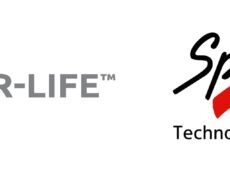
Education Technology
Op-Ed
The Benefits of Using a Share File Server in Education
By Michael Dunlop
November 30, 2021
61% of businesses migrated their workloads to the cloud in 2020, and this trend is likely to rise in the next decade. One of the main areas the cloud is universally leveraged in is education, with schools and colleges using different resources to share and distribute educational material.
Some exclusively use educational cloud resources, like Microsoft Live for Education, while others are looking at more indie sources, like Centre Stack, for their file-sharing servers. If you’re looking to add a share file server to your academic institution, consider the following.
What are the Challenges with Sharing Files in a School?
Most students operate out of their laptops, which creates the assumption that sharing files within school grounds would be easy. However, problems start to appear anytime a teacher or student has to share documents that may or may not include private information, like an SSN.
Here are just a few problems that come with sharing files on an unsecured server:
- To protect their privacy, students have to use USB sticks to hand over files.
- Emails get lost easily. Professors or teachers may not realize a student needs their help.
- Emails are also easily hackable if both users aren’t encrypting their data.
- Students may lose new versions of a file through frequent uploading and sharing.
To solve these problems, adopting a shared file server would be a great solution for schools.
How Does a Share File Server Work?
A shared file server makes it easy to share folders and files internally with students, educators, and staff members. You can share files by uploading them to an online cloud storage server before sending them out, or you can share them directly over the Internet.
Most efficient share file servers will use a hybrid solution, meaning they use both a cloud and on-premise server to function. With an integrated system, no one has to learn how to reuse the program, which is great for busy students and educators who want to start sharing right away.
Benefits for Educators with Share File Servers
Educators who use shared file servers receive a whole host of benefits, including the following:
- Increased security, control, and visibility of the servers internal systems;
- Helps you maintain compliance during year-end audits;
- Offers increased productivity, as educators can work from anywhere;
- Reduces overall costs if you were using a VPN or on-premise server;
- Simplifies file share access by utilizing file locking and version controls;
- Provides integrated technology and technical support;
- Allows schools to operate smoothly, thanks to the reliability of the server;
- Makes it possible for their educational facility to scale.
Keep in mind that most of these benefits come from hybrid shared file servers. The public cloud can be restrictive for most educational institutions, so always opt for a self-hosted infrastructure.
What Are Some Good Uses of Share Files in Education?
Educational institutions need to track each student’s performance and overall progress, meaning they must implement crucial metrics within the system.
For example, educators could assess student preparedness for exams based on average pages read, the number of research documents downloaded, and the types of books shared amongst peers. Share file servers have the flexibility to accommodate these metrics.
Southern Connecticut State University is using data centers collected from shared file servers to conduct longitudinal studies that span a student’s freshman orientation to graduation. With this information, they may be able to create a tailored learning experience for individual students.
The adoption of devices, like E-learning tools and apps, has made it possible for students to connect with each other, share ideas, and study for tests. However, data breaches are common.
The server and network you’re using can make a major difference between whether your private information is hacked and shared or kept secret. Schools can leverage 24/7 surveillance, IT professionals, and redundancies in power outages to make their servers secure.
Featured Image: Pixabay, Pexels.









No Comments